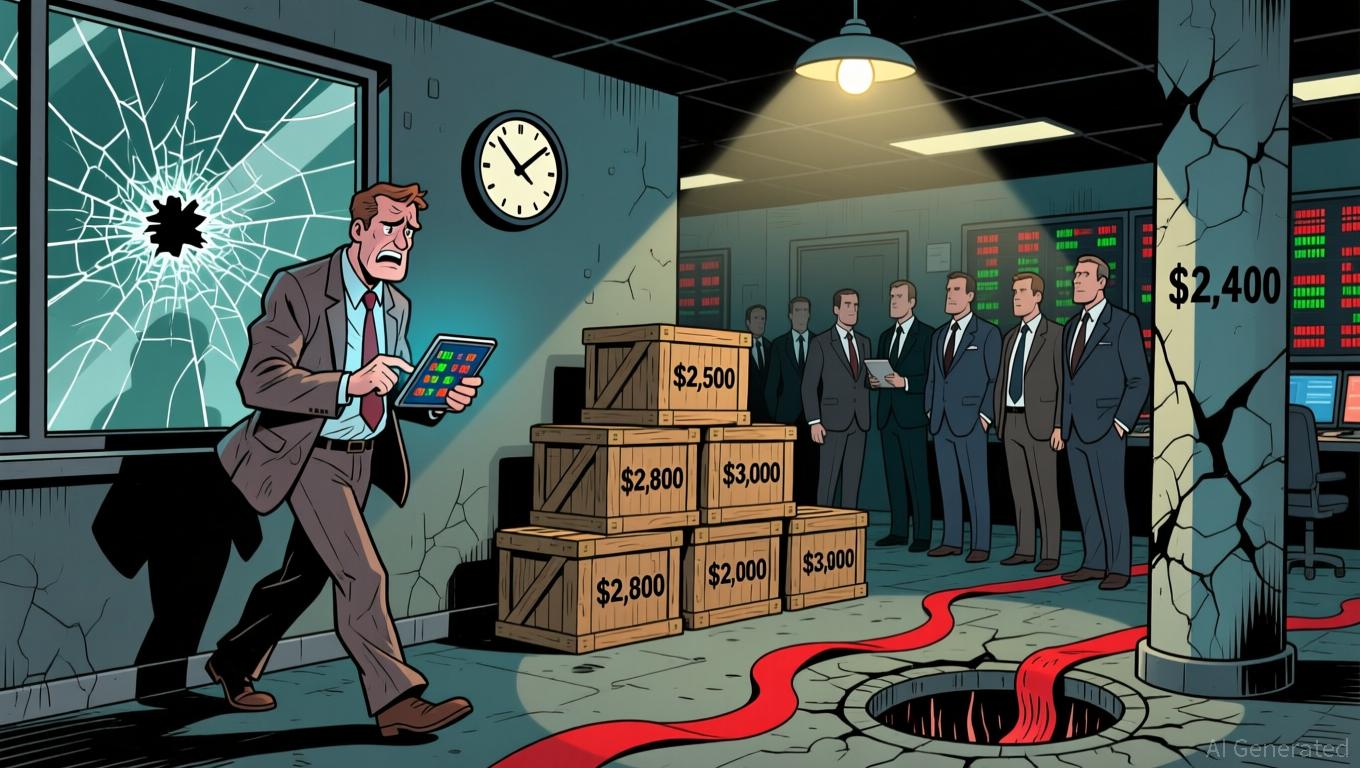Bitcoin Experiences Significant Price Increase in November 2025: Institutional Interest Rises Amid Favorable Macroeconomic Trends and Clearer Regulatory Environment
- Bitcoin surged to $88,000 in Nov 2025 driven by macroeconomic forces, institutional innovation, and regulatory clarity. - Singapore Exchange's Bitcoin futures and Anchorage-Mezo's BitcoinFi solutions expanded institutional access and liquidity. - MSCI's index reclassification shifted $8.8B toward regulated ETFs, solidifying Bitcoin's institutional adoption. - Regional momentum in Latin America and stablecoin integration reinforced Bitcoin's role as a fiat instability hedge. - The price surge reflected Bi
Institutional Infrastructure and Product Innovation

At the same time, a pioneering alliance between Anchorage Digital and Mezo brought forth institutional-level Bitcoin finance (BitcoinFi) offerings. This partnership enabled asset owners to
Regulatory Clarity and Structural Market Shifts
Regulatory changes in November 2025 further fueled institutional interest in Bitcoin.
Redefining “digital asset treasuries” as investment funds rather than operating companies reflected a larger movement: institutions are increasingly turning to ETFs for their transparency, liquidity, and regulatory protections.
Regional Regulatory Momentum and Stablecoin Expansion
Although the U.S. and EU had not granted direct regulatory approvals in November 2025, progress in Latin America showcased the expanding institutional framework for Bitcoin.
The Price Surge: A Confluence of Forces
The $88,000 milestone was the result of these broad, macro-level influences. Institutional participation, enabled by regulated products and robust infrastructure, lowered perceived risks and attracted funds from traditional asset managers. Regulatory certainty, even when disruptive (such as MSCI’s proposal), fostered a more stable environment for long-term investors. Meanwhile, regional advances in stablecoin use and BitcoinFi extended Bitcoin’s functionality beyond speculation.
As reported by Bitcoin World,
Conclusion: A New Era for Bitcoin
November 2025 signaled a major shift in Bitcoin’s transformation from a speculative instrument to a core institutional asset. The combination of product development, regulatory progress, and regional growth created a reinforcing cycle of adoption. While obstacles remain—especially in harmonizing international regulations—these changes have set the stage for Bitcoin’s broader acceptance in the future. For investors, the message is unmistakable: institutional adoption driven by macro trends is now a fundamental force shaping the financial landscape, not just a speculative story.
Disclaimer: The content of this article solely reflects the author's opinion and does not represent the platform in any capacity. This article is not intended to serve as a reference for making investment decisions.
You may also like
XRP News Today: Abu Dhabi’s Green Light Establishes UAE as a Pioneer in Stablecoin Development
- Ripple's RLUSD stablecoin gains Abu Dhabi regulatory approval as UAE advances digital finance leadership. - ADGM's "Accepted Fiat-Referenced Token" designation enables institutional use for lending and cross-border payments. - RLUSD's $1.2B market cap growth reflects institutional demand, backed by USD reserves and dual blockchain operations. - UAE's ADGM-DIFC regulatory synergy attracts global fintechs , with Ripple expanding partnerships across Africa and Asia. - Regulatory milestones position RLUSD to
Ethereum Updates: Ethereum Drops to $2,800, Prompting Surge in Demand for ZKP's Hardware-Based Presale
- Ethereum's price fell below $2,800, triggering $6.5M liquidations and testing critical support levels amid declining on-chain demand metrics. - Institutional players like BitMine accumulated 3.62M ETH (~$10.4B) despite the selloff, signaling long-term bullish conviction. - ZKP's hardware-driven presale gained traction with $17M in ready-to-ship Proof Pods and Miami Dolphins partnership for privacy-focused sports analytics. - Mutuum Finance's $19M DeFi presale and ZKP's auction model with $50K wallet caps

Vitalik Buterin Supports ZKsync: What This Means for Layer 2 Scaling
- Vitalik Buterin endorsed ZKsync in late 2025, highlighting its "underrated and valuable" work alongside the Atlas upgrade achieving 15,000 TPS and $0.0001 fees. - ZKsync's zero-knowledge rollups and EVM compatibility enabled institutional adoption by Deutsche Bank , Sony , and Goldman Sachs for cross-chain and enterprise use cases. - The Fusaka upgrade aims to double throughput to 30,000 TPS by December 2025, positioning ZKsync to compete with Polygon zkEVM and StarkNet in Ethereum's Layer 2 landscape. -

The ZK Atlas Enhancement: Revolutionizing Blockchain Scalability?
- ZKsync's 2025 Atlas Upgrade achieves 15,000–43,000 TPS with sub-1-second finality, addressing Ethereum L2 scalability bottlenecks via Airbender proofs and modular OS. - DeFi protocols like Aave and Lido leverage ZKsync's $0.0001/tx costs to unify liquidity, while Deutsche Bank and Sony adopt its trustless cross-chain infrastructure for compliance and transparency. - ZK token surged 150% post-upgrade, with TVL hitting $3.3B and analysts projecting 60.7% CAGR for ZK Layer-2 solutions by 2031 amid instituti
